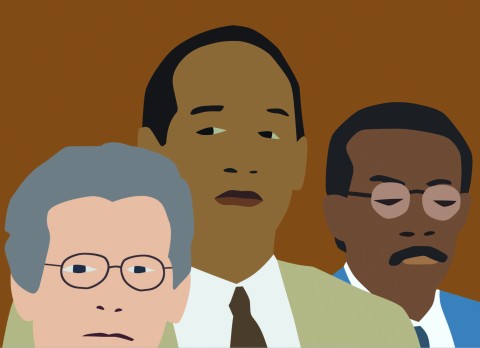
Landmarks x Rotoscoping
This month Landmarks Video features a screening of Kota Ezawa’s The Simpson Verdict, a work that utilizes digital Rotoscoping software. Bob Sabiston, creator of Rotoscoping, co-led a workshop with artist Casey Reas for Landmarks in 2019. Reas is an artist whose work is digitally-based, including A Mathematical Theory of Communication, his 2014 commission for Landmarks. Over the course of a weekend, Sabiston and Reas taught the basics of Rotoscoping to UT students from across disciplines. Participants attended a public Q&A and were then given an opportunity to create their own digital animations. The weekend culminated in a reception and screening of nine student animations in the Fine Arts Library Foundry.
Rotoscoping is an early animation technique in which an artist traces a series of photographic images and strings them together to create a moving image. Early examples of this technique can be seen in animations such as Snow White and the Seven Dwarfs (1937) and sections of The Bride of Frankenstein (1935). Recent advancements led by the creation of Sabiston’s 1990s software have spawned digital variations of the technique, including the full-length film Waking Life (2001).
In The Simpson Verdict, Ezawa’s use of Rotoscoping accentuates the motions of the characters and the camera itself. It emphasizes their glances and movement and draws out the suspense of the moment when the verdict was read.
“Ezawa renders these moments in his signature flat, graphic, pop art style, which recalls paint-by-number or Alex Katz compositions. His visual vocabulary extracts lines and shadows, reducing imagery to blocks of color. Faces become simplified to eyes, brows, nostrils, and lips, and bodies gesture in stilted, abrupt manners, thus calling attention to the artificiality of the medium as well as the manufacture of spectacle. The simplicity lays bare how the movement and angles of the camera—close-ups, wide shots, panning, tilting, and so on—heighten the drama of a sequence and thus our collective memory of an event.” – Kanitra Fletcher
Read Fletcher’s full essay on The Simpson Verdict on Landmarks Video page and view excerpts from the 2019 Rotoscoping workshop below. Ezawa’s video is on view in the Art Building atrium through the end of October.
Wild West, 2019. Rotoscoped animation by Colette Neumann and Abhinav Sangisetti
Danny's Wheels, 2019. Rotoscoped animation by Chineye Emeghara and Hali Simmons
Work Day, 2019. Rotoscoped animation by Tyler Hobbs, Abhinav Velaga, Alyssa Kristina Perales and Ely German
Rock Paper God, 2019. Rotoscoped animation by Yohannes Laksana, Laura Gonima and Laura Roewe
Interlude, 2019. Rotoscoped animation by Lauren Ibanez and Alexandra Vanderhider
Hand Plant, 2019. Rotoscoped animation by Evelyn Phan, Nila Selvaraj, Manuel Ponce and Stellanie Abella
Talking Heads, 2019. Rotoscoped animation by Rafael Fernando Gutierrez Jr., Amber Tucker and Linda Li
Tomato, 2019. Rotoscoped animation by Usman Farooqi, Justin Shackelford, Kiersten Stegman and Andrew Kim
Sunny Eyes, 2019. Rotoscoped animation by Stephen-Bernard Callender, Karl Gelinsky and Shuyan Li
